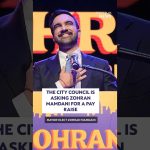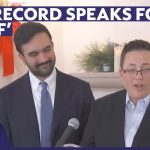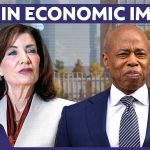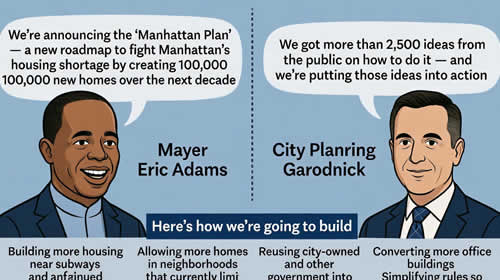President Donald Trump’s Cabinet Meeting – August 26, 2025
On August 26, 2025, President Donald J. Trump convened his cabinet in Washington for a wide-ranging policy discussion. The meeting served as a platform for the President to reinforce his administration’s economic strategy, outline ongoing trade and energy initiatives, and present measures addressing healthcare, public safety, education, and technology. The session was presented as both a progress report and a roadmap for the next phase of his term.
Industrial Growth and Trade Policy
The President opened with an overview of America’s industrial resurgence. He highlighted significant expansion in the defense manufacturing sector, with missile systems and advanced weaponry being produced at record levels. This, he argued, was evidence of the country’s renewed manufacturing base and its ability to meet both domestic and allied security needs.
In the automotive industry, Trump attributed recent gains to tariff policies that, in his view, discouraged offshoring. Factories that had previously shifted production to Mexico, Canada, and Europe were now reopening or expanding operations in the United States. Output, according to his remarks, had increased by tens of thousands of vehicles per month.
Similar trends were reported in the steel and energy sectors. Domestic steel production had grown substantially, while U.S. oil output had expanded by several hundred thousand barrels per day. Trump described these developments as the result of an intentional policy mix: protective tariffs, renegotiated trade arrangements, and a concerted effort to repatriate industrial capacity.
Energy Policy and Global Market Position
Energy policy formed another cornerstone of the meeting. The President reaffirmed his administration’s skepticism toward wind and solar power, characterizing these sources as unreliable and environmentally damaging. Instead, he emphasized a strategy built around coal and nuclear power, sectors that he argued could provide stable, large-scale energy capacity.
Trump positioned the United States as an emerging global leader in energy exports. He pointed to agreements recently secured with the European Union and Japan, under which these economies committed to increasing imports of U.S. energy resources. In his telling, this would not only strengthen America’s balance of trade but also reduce allies’ dependence on less stable suppliers.
Healthcare and Pharmaceutical Reform
The President then shifted to healthcare, where he introduced the “favored nations” initiative. Under this policy, the United States would benchmark its prescription drug costs against those of other advanced economies, ensuring that Americans paid no more than citizens abroad for the same medications. Trump asserted that such a framework could reduce drug prices by up to 90 percent, easing the financial burden on consumers.
In addition, he referenced agreements with major insurers aimed at reducing delays in treatment approvals, along with efforts to modernize electronic medical records by making them more accessible through mobile technology. He also noted a forthcoming requirement that medical schools expand their training on nutrition and preventive health, with the objective of equipping physicians to provide practical guidance on lifestyle-related conditions.
Another health concern raised was the increasing incidence of autism. Trump expressed alarm at the data and indicated that his administration would present targeted policy measures in September, focusing on what he described as potential artificial drivers of the trend.
Public Safety and Urban Crime
Crime and security were discussed at length. The President voiced concern about violence in Washington, D.C., and other major cities, describing it as a critical challenge. He signaled willingness to deploy the National Guard to restore order in the capital and proposed that homicide in Washington be met with the death penalty. Similar measures, he said, could be considered in other cities with high crime rates, including Chicago, Baltimore, and Los Angeles.
This emphasis on public order, he argued, was necessary to stabilize urban centers and create conditions conducive to long-term economic and social development.
Education and Workforce Development
Education policy was presented in the context of decentralization and workforce preparedness. Trump reiterated his position that educational oversight should return to state and local authorities, with the federal role substantially reduced. He proposed closing or downsizing federal departments, reallocating resources to empower school boards and parents.
Vocational and technical training was highlighted as a growth area. The President emphasized the need for programs in secondary schools and colleges that prepare students for skilled professions such as electrical work, mechanical repair, and heating and cooling system maintenance. Such programs, he argued, would directly address labor shortages in key trades and support the broader industrial expansion.
Artificial Intelligence and Technology Leadership
The President devoted a portion of the meeting to technology, with a particular focus on artificial intelligence (AI). He asserted that the United States was currently ahead of China in AI development, citing the construction of large-scale data centers. He framed AI leadership as a strategic priority for economic competitiveness and national security.
He also referenced the “AI Challenge,” a program spearheaded by First Lady Melania Trump, designed to encourage youth participation in AI research and application. This initiative was positioned as both an educational tool and a talent pipeline for the technology sector.
Fisheries, Food Safety, and Environmental Measures
Environmental and agricultural policy surfaced in relation to fisheries and food safety. Trump criticized offshore wind projects, claiming they harmed marine life and disrupted ecosystems. He pledged stricter oversight of imported seafood, particularly shrimp from Asia, which had in the past raised concerns about contamination.
The President underscored his administration’s commitment to supporting domestic fishermen and farmers, linking food safety with broader economic resilience.
Tax Policy and Broader Economic Vision
In closing, Trump revisited his administration’s tax agenda. He noted that earlier legislation had delivered what he described as the largest tax cuts in history for working-class Americans, including the elimination of taxes on tips, overtime pay, and certain benefits. He argued that these measures had not only provided relief for workers but also expanded the Republican Party’s appeal to new constituencies.
Looking forward, he framed the coming three and a half years as a period of opportunity. National milestones such as the 250th anniversary of independence, the 2026 World Cup, and the 2028 Olympic Games were presented as occasions to showcase the nation’s economic strength and social vitality.
Conclusion
The August 26 cabinet meeting functioned as both a progress report and a strategic statement. The President positioned his administration as delivering measurable gains in industrial capacity, energy exports, and healthcare affordability, while also advancing proposals on crime reduction, education reform, and technology leadership.
Sources: White House Official Video , Midtown Tribune News
Big New York News BigNY.com










